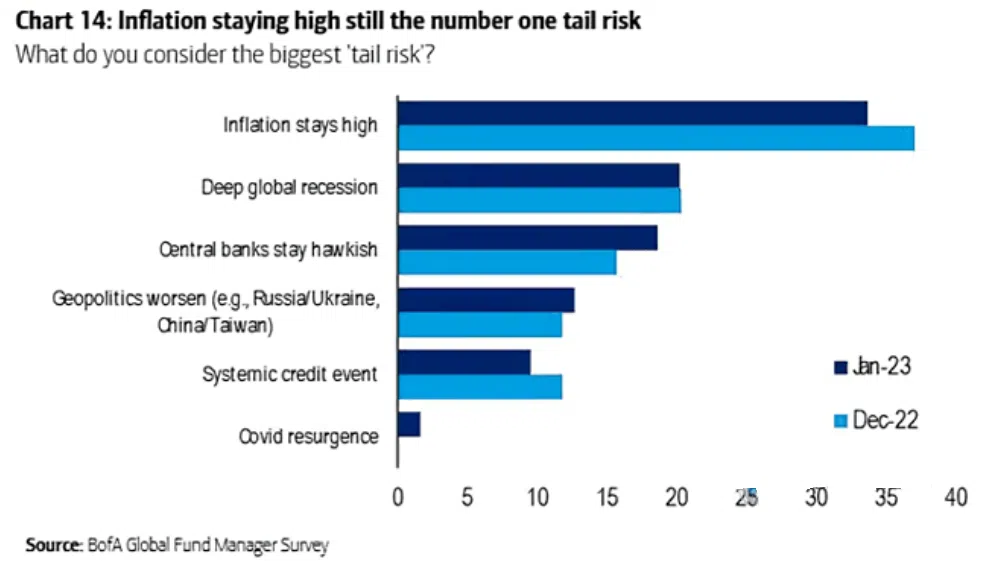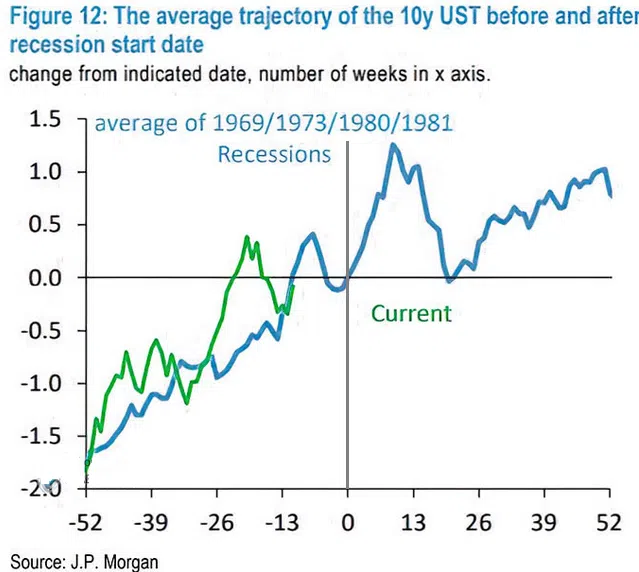Silver Still Struggles With $24
Has the silver price lost its mojo?
With silver going sideways for nearly a month, the white metal’s weakening momentum is an ominous sign for the precious metals market. Moreover, with mining stocks underperforming gold in recent days, they’re also starting to show cracks in their foundation.
Yet, while recession fears have increased, the Fed’s Beige Book (released on Jan. 18) stated that employment and wage inflation “remained elevated.” An excerpt read:
“Employment continued to grow at a modest to moderate pace for most Districts…. While some Districts noted that labor availability had increased, firms continued to report difficulty in filling open positions. Many firms hesitated to lay off employees even as demand for their goods and services slowed and planned to reduce headcount through attrition if needed.
“With persistently tight labor markets, wage pressures remained elevated across Districts, though five Reserve Banks reported that these pressures had eased somewhat. Some employers noted they have continued to offer bonuses and enhanced benefits to attract and retain workers.”
On top of that:
“Selling prices increased at a modest or moderate pace in most Districts, though many said that the pace of increases had slowed from that of recent reporting periods.”
Therefore, while inflation has cooled somewhat as the lagged effect of lower commodity prices from October filters through the U.S. economy, the U.S. labor market remains far from the demand destruction required to curb inflation.
As further evidence, Nick Bunker, Economic Research Director for North America at the Indeed Hiring Lab, tweeted on Jan. 18:
 Source: Twitter
Source: Twitter
Although, while the crowd assumes that rate cuts are on the horizon, a realization would only spur more demand, tighten the U.S. labor market even more, and further uplift wage inflation. As a result, their expectations contrast fundamental logic.
Furthermore, while the consensus views the outcome as a ‘tail risk’ (a low probability, high impact event), we see it as the most likely outcome.
Please see below:

To explain, Bank of America’s latest Global Fund Manager Survey shows that high inflation remains the greatest tail concern among institutional investors, with hawkish central banks in third.
The data speaks to the consensus mindset that inflation should fall quickly, and there is only a small chance that it won’t. So, rate cuts are likely, and a return to pre-pandemic monetary policy is on the horizon. However, the fundamentals contrast this overwhelmingly consensus narrative, and that’s why there is plenty of room for potential re-pricings in the months ahead.
Finally, while a recession should arrive in late 2023, the average price action in the 1970s/1980s shows the events were bullish for the U.S. 10-Year Treasury yield. Moreover, since the FFR rose to new cycle highs during three of the four recessions, the crowd is overly optimistic about the future path of interest rates.
Please see below:

To explain, the blue line above tracks the average path of the U.S. 10-Year Treasury yield during the four recessions from 1969 to 1981, while the green line above tracks its current movement. If you analyze the vertical gray line in the middle of the chart (at 0), you can see that when the recessions hit, the U.S. 10-Year Treasury yield often rallied for weeks before a pullback occurred and another uptrend began.
Consequently, the historical lessons about inflation and interest rates are clear, even though the crowd assumes ‘this time is different.’
Overall, silver’s pullback was likely a sign of things to come, as the price remains well above its fundamental value. In addition, with silver’s outperformance of gold often a precursor to sharp drawdowns, the relative strength exhibited in October and November has become relative weakness in December and January.
Therefore, the technical playbook signals that meaningful reversals for gold, silver and mining stocks should occur sooner rather than later.
Are you a buyer of silver at these levels? How could an S&P 500 pullback impact the white metal? How important is the labor market regarding Fed officials’ decision-making?
Alex Demolitor
Precious Metals Strategist